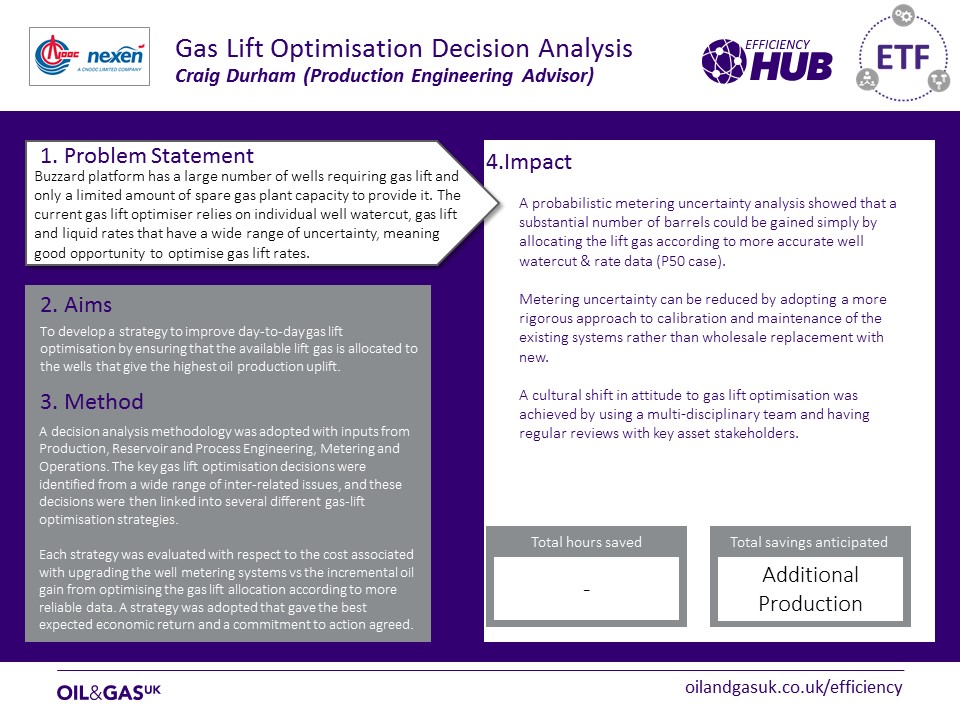Nexen – Gas Lift Optimisation Decision Analysis
Problem Statement
Buzzard platform has a large number of wells requiring gas lift and only a limited amount of spare gas plant capacity to provide it. The current gas lift optimiser relies on individual well watercut, gas lift and liquid rates that have a wide range of uncertainty, meaning good opportunity to optimise gas lift rates.
Aims
To develop a strategy to improve day-to-day gas lift optimisation by ensuring that the available lift gas is allocated to the wells that give the highest oil production uplift.
Method
A decision analysis methodology was adopted with inputs from Production, Reservoir and Process Engineering, Metering and Operations. The key gas lift optimisation decisions were identified from a wide range of inter-related issues, and these decisions were then linked into several different gas-lift optimisation strategies.
Each strategy was evaluated with respect to the cost associated with upgrading the well metering systems vs the incremental oil gain from optimising the gas lift allocation according to more reliable data. A strategy was adopted that gave the best expected economic return and a commitment to action agreed.
A probabilistic metering uncertainty analysis showed that a substantial number of barrels could be gained simply by allocating the lift gas according to more accurate well watercut & rate data (P50 case).
Metering uncertainty can be reduced by adopting a more rigorous approach to calibration and maintenance of the existing systems rather than wholesale replacement with new.
A cultural shift in attitude to gas lift optimisation was achieved by using a multi-disciplinary team and having regular reviews with key asset stakeholders.
Total Savings Anticipated
Additional Production
Click on the image above to download the case study.




